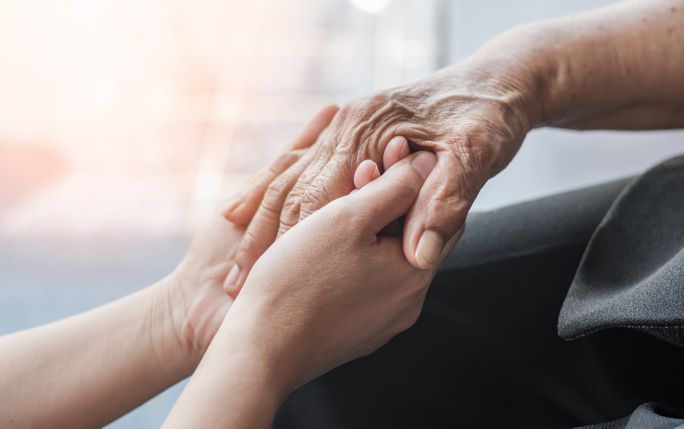Transforming palliative and end-of-life care for service users

Professor Pippa Hunter-Jones, Dr Lynn Sudbury-Riley and Dr Ahmed Al-Abdin embarked on a research project to improve the delivery of palliative and end-of-life care for patients and their families. The research has been highlighted as one of the Management School’s ‘Research Impact’ cases and has gone on to inform government policy.
Tell us a bit about the research project and it came about?
In 2014 East Cheshire Hospice based in Macclesfield, contacted us and asked whether we could look into the service the hospice provides to patients and families in more depth. The hospice was performing well and had excellent service reports, however, staff were keen to find out how they could further improve their services and patient experience. Often, when it comes to reviewing performance, hospices are assessed on numerical data and feedback which doesn’t always reflect a patient’s personal experience. Thus, we were asked to develop ways of obtaining more meaningful feedback to help identify ways of improving the day-to-day life of patients and also the support given to the families of those in care.
How did you go about starting the project? Can you give us some examples of the feedback you received?
In response to the hospice’s request, we drew upon services management tools and concepts such as customer journey mapping and designed the new Trajectory Touchpoint Technique (TTT). The TTT is a new methodology to uncover opportunities for palliative care services with an emphasis on capturing overall ‘user experience’ and how users feel. In short, the TTT is a series of touchpoints such as: pre-arrival, arrival, facilities, clinical care, little extras, after care discharge and support, whereby the care-provider can obtain feedback about these specific areas of their service. The TTT method is successful because it allows patients and families to tell their story to someone who is completely impartial.
At lot of the feedback we received led to simple and low-cost changes which could be easily implemented. For example, making sure signage to and around the hospice is clear, ensuring all staff wear a name badge, creating a ‘quiet area’ for families to meet and improving internal communication and communication between healthcare providers are all simple changes which can have a huge impact on the experience of patients and their families.
What impact has the research had so far?
Since beginning the project with East Cheshire Hospice, we have worked with an additional six hospices across the country, in-patient units including the Royal Liverpool Hospital, the Liverpool Heart and Chest Unit, Wirral St John Hospital, a children’s hospice, Marie Curie and Maimonides Medical Center in Brooklyn New York, to apply the TTT technique.
So far, the TTT has been used with over 240 service users, including inpatients, outpatients, discharged patients, families and the bereaved. We have gathered in excess 2.5 million words of data and over 250,000 words of narrative of service users’ experiences. This has enabled us to really gauge how service users are feeling as they can go at their own pace and tell their story.
As a result of gathering this information and research, we were invited to speak at the All-Party Parliamentary Inquiry into Improving Access to Hospice and Palliative Care. We have also developed a TTT tool-kit which is available for all hospices to use in order to ‘train the trainer’ to implement the TTT technique.
In addition to informing Government policy the research has impacted ways in which palliative care services are designed, delivered, communicated, co-created, integrated with other healthcare services, and led to the launch of a completely new Hospice@Home service. These initiatives have benefitted patients and their families, palliative care staff, and other clinicians in the healthcare ecosystem. During the first six months of introducing Hospice@Home provision, 50+ hospital admissions were prevented and 102 people died in their preferred place of death.
What are the next steps?
There is lots on the agenda going forward. We are currently writing a book chapter on not-for-profit marketing and also exploring ideas of how we can adapt and implement the TTT technique within the tourism industry. COVID-19 has had a huge impact on tourism so it would be interesting to see if any lessons can be learnt from our project and whether we can use a similar technique to help the industry bounce-back. There’s also a strong link between tourism and palliative care as many service-users rely on the tourism industry for respite care, arts and craft activities and outdoor therapeutic activities. We are also hoping to increase the international element to the project as there is a huge amount of work to do in the care sector post-COVID-19.